Vietnam, a country of diverse landscapes and rich cultural heritage, offers a wide range of experiences for travelers. In this article, you will explores the best places to stay in Vietnam, including Ho Chi Minh City, Hanoi, and Da Nang, providing detailed information on the best times to visit and the top attractions in each location. Whether you’re planning a luxurious stay or a budget-friendly trip, these tips will help you make the most of your visit to Vietnam.
Sapa is one of the best places to stay in Vietnam
Nestled in the northern mountains of Vietnam, Sapa is renowned for its stunning natural landscapes, rich cultural heritage, and ethnic diversity. Often enveloped in mist, Sapa is known as the “town in the clouds.” Its terraced rice fields, vibrant markets, and traditional villages make it a must-visit destination.
The best time to travel to Sapa
The best time to visit Sapa is during the spring (March to May) and autumn (September to November). These periods offer mild weather and clear skies, ideal for trekking and exploring the breathtaking scenery. During these months, the rice terraces are lush and green, creating a picturesque landscape perfect for photography. Spring also brings blossoming flowers, adding vibrant colors to the already stunning vistas.
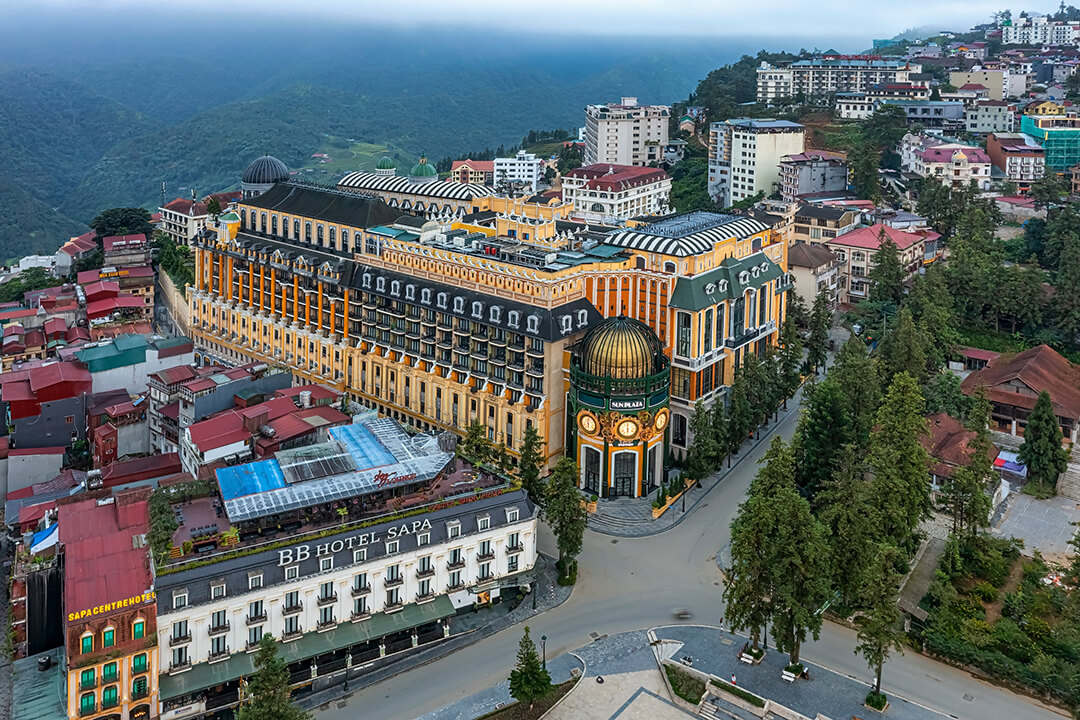
In contrast, winter (December to February) can be quite cold, with temperatures occasionally dropping below freezing. However, this season can also be magical, as snow sometimes blankets the landscape, turning Sapa into a winter wonderland. Summer (June to August) is the rainy season, which can make trekking more challenging due to slippery trails and occasional landslides, but the rain also brings a unique, misty charm to the area
The best places in Sapa
Fansipan Mountain
Known as the “Roof of Indochina,” Fansipan is the highest peak in Vietnam, standing at 3,143 meters. Reaching the summit is a challenging trek that takes about two to three days, but the panoramic views from the top are worth the effort. For those less inclined to trek, a cable car ride offers a less strenuous way to enjoy the breathtaking vistas.
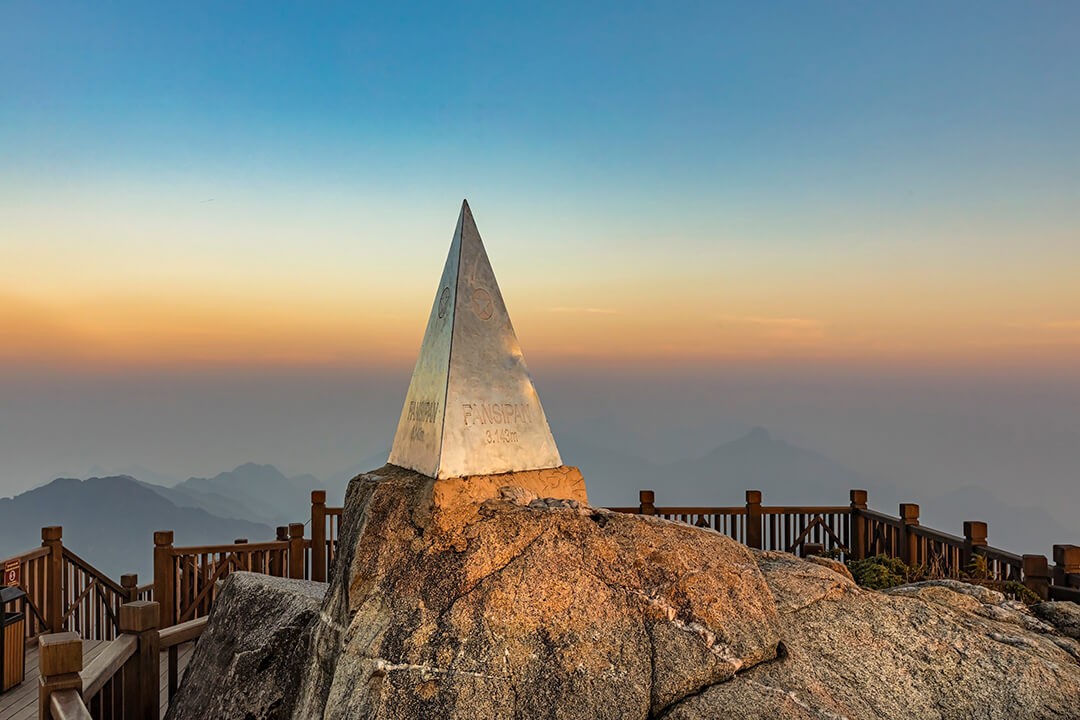
Cat Cat village
Just a short trek from Sapa town, Cat Cat Village is home to the Hmong ethnic minority. Visitors can explore traditional stilt houses, watch cultural performances, and purchase handmade crafts. The village also features a picturesque waterfall and rice terraces, making it a favorite spot for photographers.
Muong Hoa Valley
Famous for its terraced rice fields, Muong Hoa Valley is a haven for trekkers and nature lovers. The valley is dotted with small ethnic minority villages, where visitors can experience local customs and hospitality. The valley is particularly beautiful during the rice planting and harvesting seasons, when the terraces are at their most vibrant.
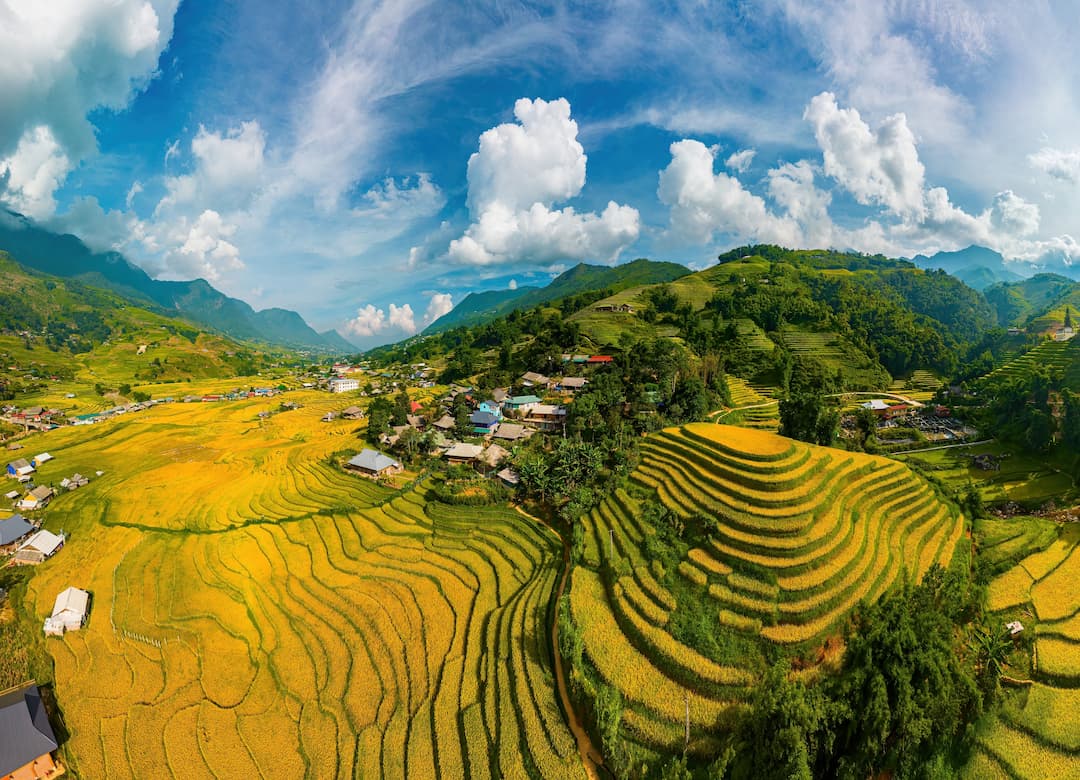
Da Lat – City of a thousand flowers
Located in the Central Highlands, Da Lat is known for its cool climate, colonial architecture, and stunning landscapes. Often referred to as the “City of a Thousand Flowers,” Da Lat is a favorite destination for those seeking relaxation and natural beauty.
The best time to travel to Da Lat
The best time to visit Da Lat is during the dry season, from November to March. During this period, the weather is pleasantly cool, with temperatures ranging from 15°C to 24°C (59°F to 75°F). This is the perfect time for outdoor activities like hiking, cycling, and exploring the town’s many gardens and lakes. The clear skies and mild temperatures make it ideal for sightseeing and taking in the picturesque views.
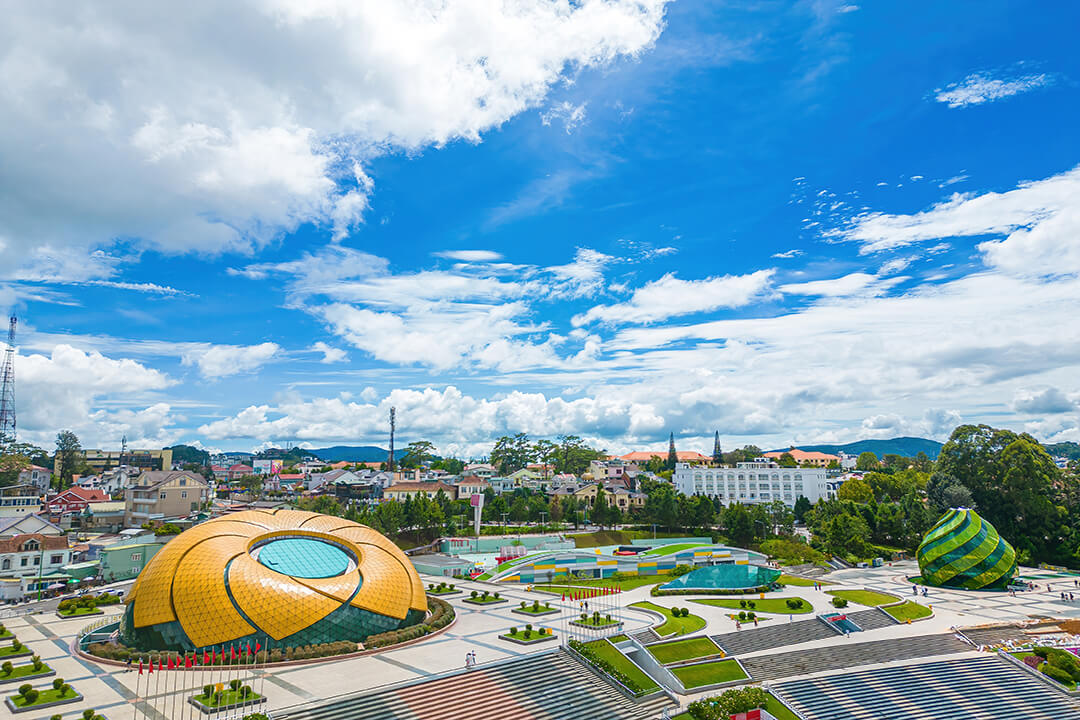
From April to October, Da Lat experiences its rainy season, with frequent afternoon showers. While the rain can make some outdoor activities less enjoyable, it also brings a lush green landscape and fewer tourists. If you don’t mind the occasional downpour, this can be a peaceful time to visit and enjoy the town’s natural beauty without the crowds.
The best places in Da Lat
Xuan Huong Lake
Located in the heart of Da Lat, Xuan Huong Lake is a tranquil spot perfect for leisurely strolls, pedal boating, and picnicking. The lake is surrounded by lush gardens and colonial-era buildings, providing a picturesque backdrop for relaxation. At dawn and dusk, the lake reflects the changing colors of the sky, creating a serene and romantic atmosphere.
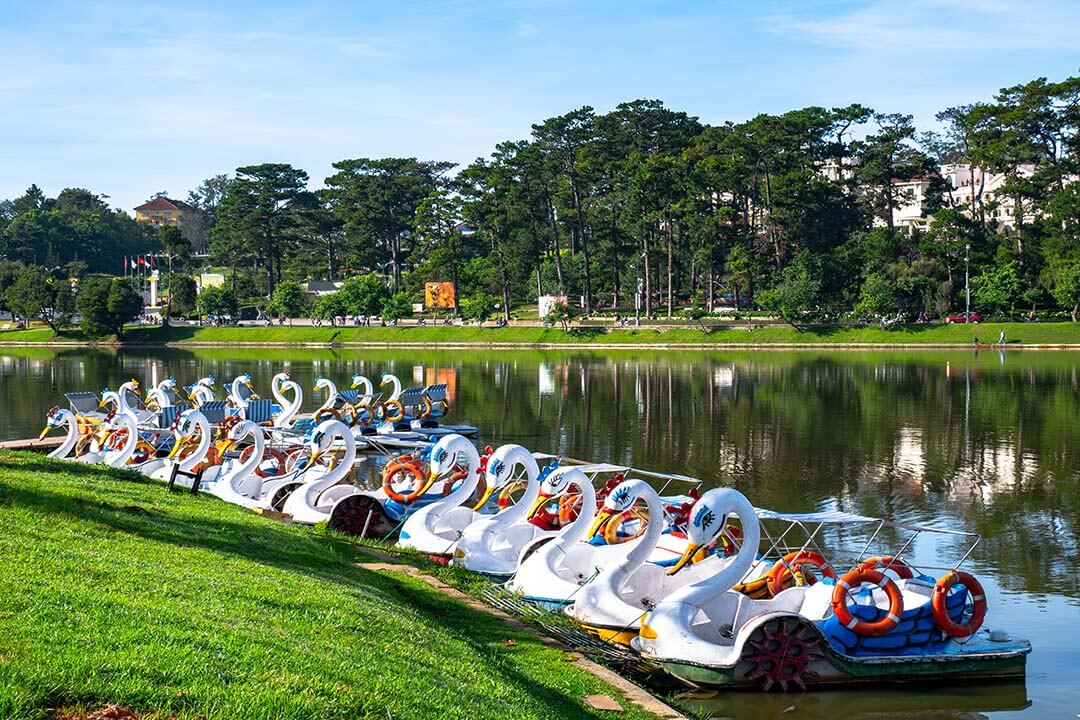
The lake’s calm waters and scenic surroundings make it a popular spot for both locals and tourists. You can rent a pedal boat and explore the lake at your own pace, or simply walk along the shoreline and enjoy the fresh air. The nearby cafes and restaurants offer a great place to sit and enjoy the view while sipping on a cup of Da Lat’s famous coffee.
Da Lat Flower Gardens
A paradise for flower lovers, the Da Lat Flower Gardens are home to a vast array of blooms, including roses, orchids, and hydrangeas. The gardens are meticulously landscaped, with colorful flower beds, ornamental shrubs, and artistic topiaries. The annual Flower Festival transforms the gardens into a floral wonderland, attracting visitors from all over the world.
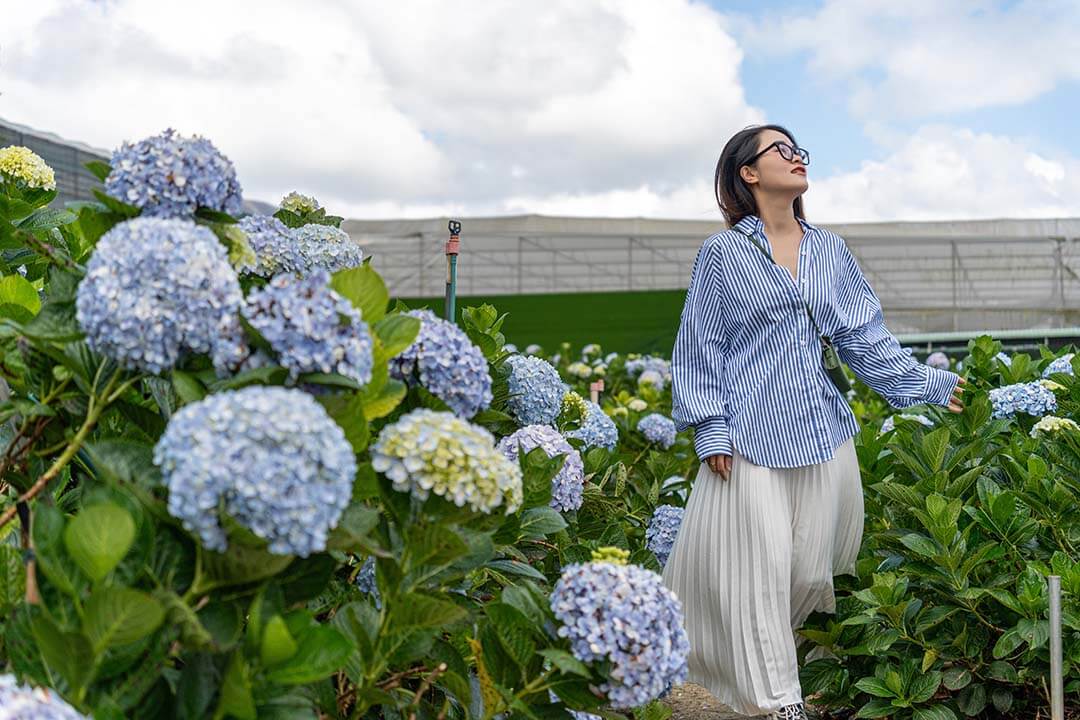
The gardens cover an area of about 7,000 square meters, and feature various themed sections showcasing different types of flowers and plants. You can spend hours wandering through the beautifully designed pathways, taking in the vibrant colors and fragrant scents. The Flower Festival, held every two years, is a major event that includes flower displays, parades, and cultural performances, making it an exciting time to visit.
Pongour Waterfall
Pongour Waterfall, also known as the “Seven-Level Waterfall,” is one of the most stunning natural attractions in Dalat. Located about 50 kilometers south of Dalat city, Pongour is renowned for its unique multi-tiered cascades that stretch over 100 meters wide and drop 40 meters in height. This breathtaking waterfall is surrounded by lush greenery and offers a tranquil escape into nature.
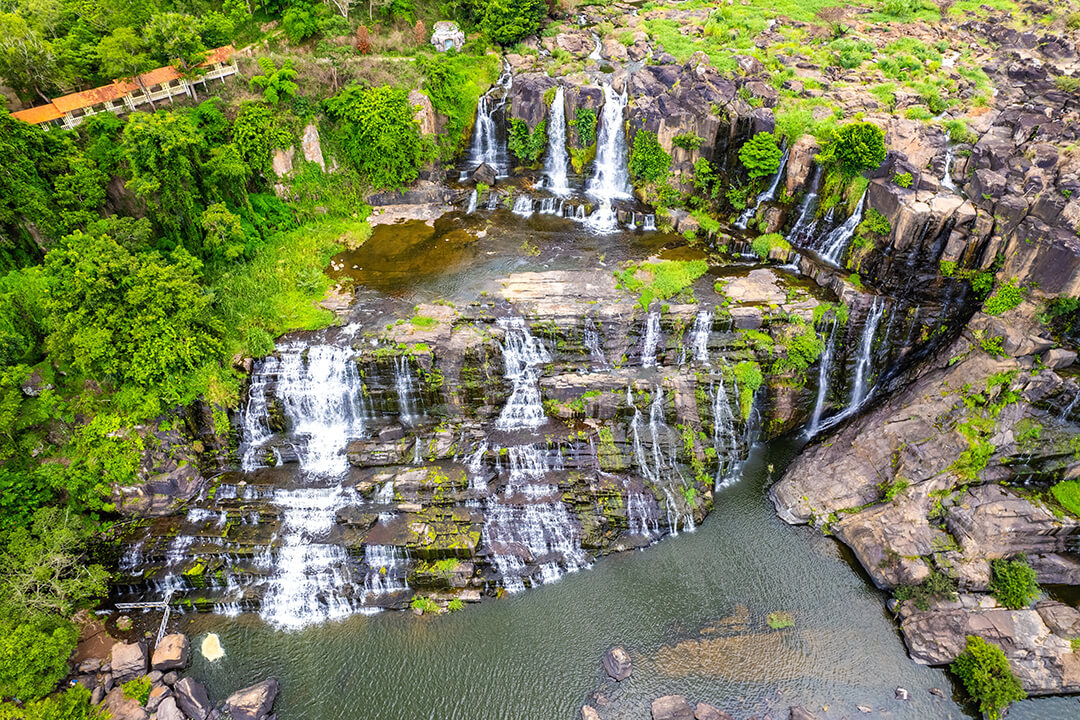
Pongour Waterfall is not only known for its natural beauty but also holds cultural significance. According to local legend, the waterfall was once guarded by a powerful female chieftain named Kanai, who was known for her ability to tame wild animals. After her passing, the animals mourned her loss, and the waterfall was formed from their collective tears. This story adds a mystical element to the already enchanting landscape.
Activities and Attractions
Visitors to Pongour Waterfall can enjoy a variety of activities:
- Hiking: The surrounding area offers several hiking trails that lead through dense forests and open up to panoramic views of the waterfall and the valley below.
- Picnicking: The lush, grassy areas around the waterfall are perfect for picnics. Bring a blanket and some snacks to enjoy a leisurely meal with the sound of rushing water in the background.
- Swimming: There are several natural pools at the base of the waterfall where visitors can take a refreshing dip. The water is cool and clear, making it a perfect spot to relax and unwind.
- Photography: The multi-tiered structure of the waterfall, combined with the surrounding greenery, makes it a photographer’s paradise. The best time for photography is early morning or late afternoon when the light is soft and diffused.
Dalat travel tips
When planning your trip to Da Lat, here are some tips to make the most of your visit:
- Accommodation: There are plenty of hotels and guesthouses to choose from, ranging from budget-friendly options to luxurious resorts. Booking in advance is recommended, especially during peak tourist seasons and festivals.
- Transportation: Da Lat can be explored on foot, by bicycle, or by motorbike. Renting a motorbike is a popular option for getting around and seeing the sights at your own pace.
- Local Cuisine: Don’t miss out on trying Da Lat’s local delicacies, such as fresh strawberries, artichoke tea, and a variety of street food. The night market is a great place to sample different dishes.
- Weather: The weather in Da Lat can be quite cool, especially in the evenings. Be sure to pack layers to stay comfortable during your visit.
- Cultural Etiquette: When visiting temples and historical sites, dress modestly and show respect for local customs and traditions.
Ancient town of Hoi An
Hoi An, located in central Vietnam, is a well-preserved ancient town that offers a glimpse into the country’s rich history and culture. With its narrow streets, historic buildings, and vibrant lantern festivals, Hoi An is a UNESCO World Heritage site that enchants visitors with its timeless charm.
The best time to travel to Hoi An
The best time to visit Hoi An is during the dry season, which runs from February to April. During these months, the weather is warm and pleasant, with average temperatures ranging from 25°C to 30°C (77°F to 86°F). This period is ideal for exploring the town’s historic sites, enjoying the beaches, and participating in outdoor activities.
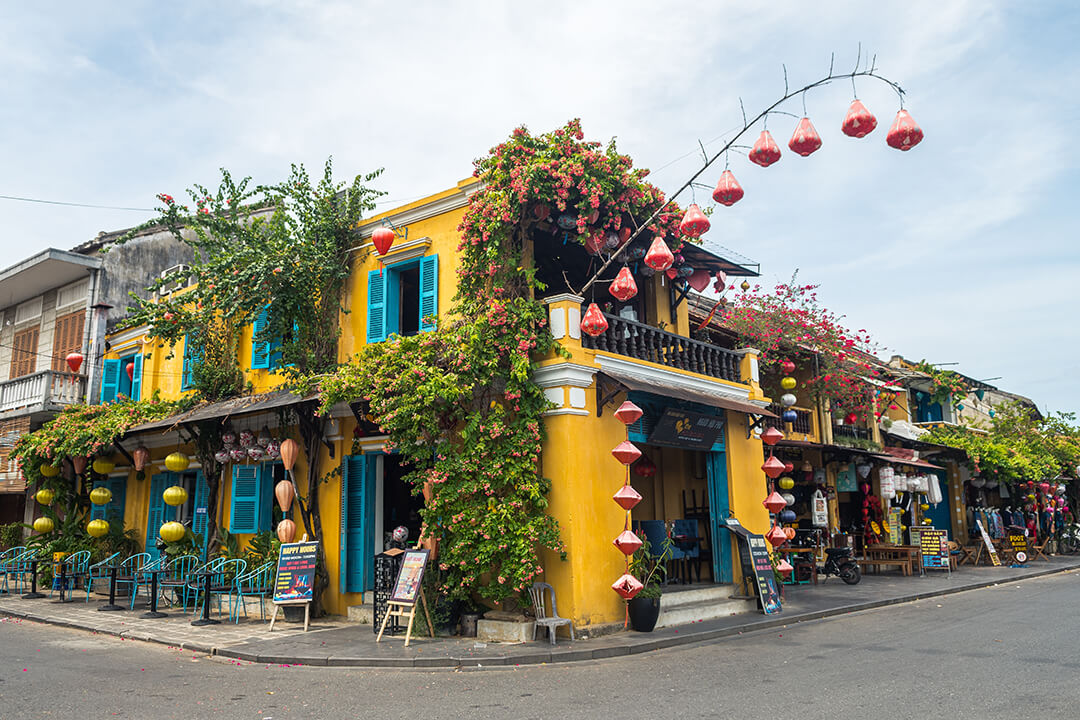
From May to August, the weather remains warm but becomes more humid, leading into the rainy season from September to January. The rainy season brings occasional flooding, especially in the low-lying areas, but it also means fewer tourists and a quieter atmosphere. If you don’t mind the rain, this can be a peaceful time to experience Hoi An’s charm without the crowds.
The best places in Hoi An
An Bang Beach
Located just a short drive from the town center, An Bang Beach is a beautiful stretch of coastline perfect for sunbathing, swimming, and water sports. The beach is lined with restaurants and bars, offering a range of local and international cuisine. The laid-back atmosphere and stunning sunsets make it a popular spot for both locals and tourists.
An Bang Beach is known for its soft white sand and clear blue waters, making it an ideal place to relax and enjoy the natural beauty of Vietnam’s coast. You can rent a sun lounger and umbrella for a day of relaxation, or try your hand at surfing and paddle boarding. The beach’s vibrant dining scene includes everything from fresh seafood to international dishes, ensuring there’s something to satisfy every palate.
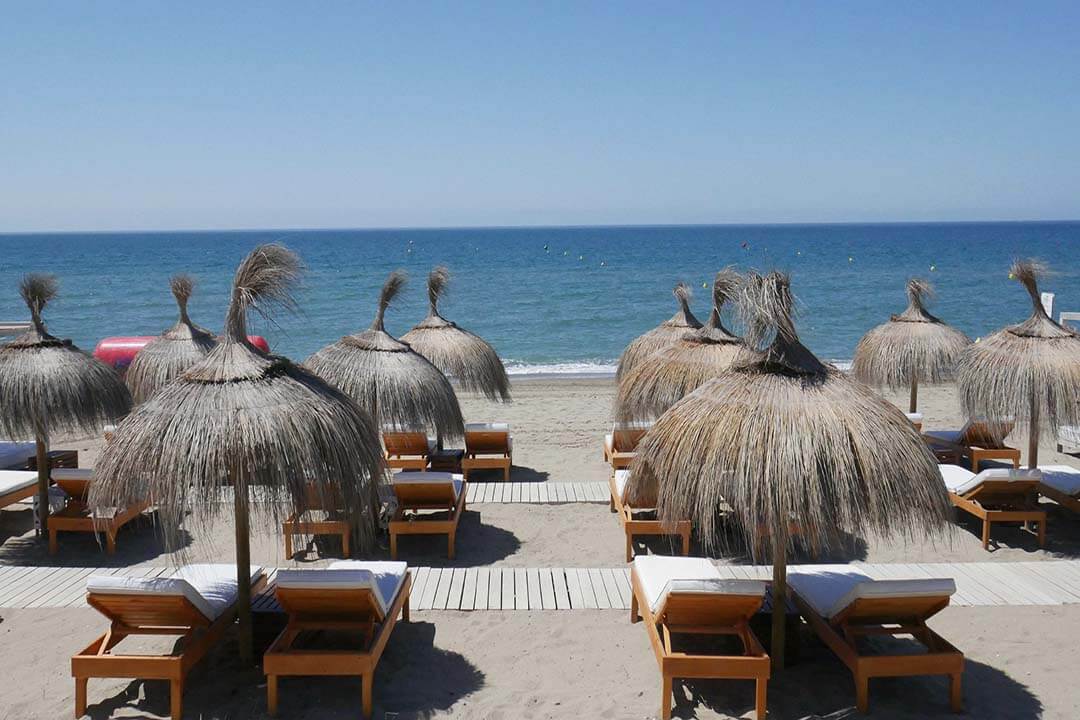
In the evenings, An Bang Beach comes alive with music and entertainment, creating a lively atmosphere perfect for enjoying a cocktail while watching the sunset. The friendly and welcoming vibe of the beach makes it a favorite among both locals and visitors, providing a perfect escape from the hustle and bustle of Hoi An’s town center.
Japanese Covered Bridge
The Japanese Covered Bridge, also known as Chùa Cầu, is an iconic symbol of Hoi An. Built in the 16th century by the Japanese community, the bridge was constructed to connect them with the Chinese quarters of the town. The bridge features ornate carvings and a small temple dedicated to the Taoist god of weather, making it a must-visit for history enthusiasts and photographers.
The bridge’s unique architectural design includes a pagoda roof and intricate woodwork, reflecting the craftsmanship of the Japanese artisans who built it. As you walk across the bridge, you can admire the detailed carvings of mythical creatures and historical figures, each telling a story of Hoi An’s rich cultural heritage.
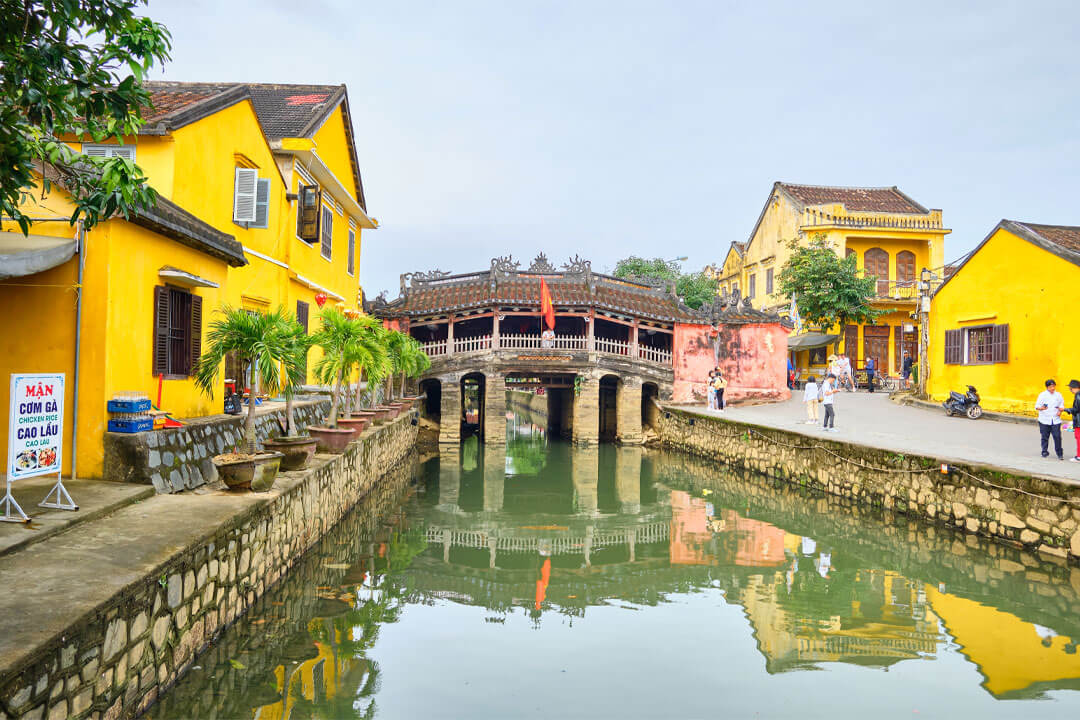
The Japanese Covered Bridge is not just a historical monument but also a functional part of Hoi An’s infrastructure, connecting two vibrant areas of the town. The bridge is beautifully illuminated at night, creating a picturesque scene that captures the essence of Hoi An’s timeless beauty. Whether you’re exploring during the day or evening, the Japanese Covered Bridge offers a glimpse into the town’s past and its enduring charm.
Hoi An Night Market
The Hoi An Night Market, located along Nguyen Hoang Street, is a vibrant and bustling destination that comes alive every evening from 5:00 PM to 10:00 PM. It offers a sensory feast of sights, sounds, and smells that captivate both locals and tourists. The market is famous for its colorful lanterns, which illuminate the streets and create a magical atmosphere. Strolling through the market, visitors can find a wide variety of goods, from handmade crafts and souvenirs to local delicacies and street food.
One of the main highlights of the Hoi An Night Market is its extensive selection of street food. Vendors sell an array of delicious Vietnamese dishes, including banh mi, pho, and cao lau. The market is also a great place to try unique local treats like grilled skewers, sweet potato pancakes, and coconut ice cream. The lively atmosphere is enhanced by the friendly vendors who are always eager to share the stories behind their culinary creations. Eating at the night market provides a fantastic opportunity to immerse oneself in the local culture and flavors of Hoi An.
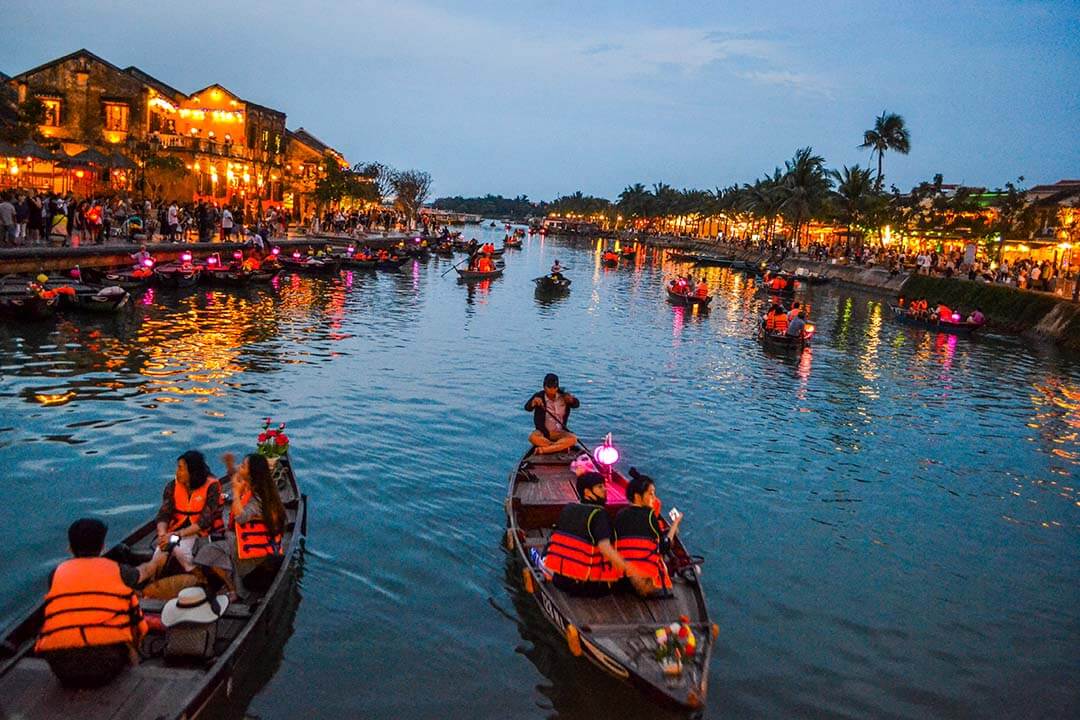
In addition to food, the Hoi An Night Market is renowned for its artisanal crafts. Shoppers can browse stalls selling handmade lanterns, jewelry, clothing, and artwork. Many of these items are crafted by local artisans, making them unique souvenirs and gifts. The market also offers performances and live music, adding to the festive ambiance. Whether you’re looking to shop, eat, or simply soak in the lively atmosphere, the Hoi An Night Market is a must-visit destination that showcases the rich culture and vibrant spirit of the town.
Ho Chi Minh city – Pearl of the Far East
Ho Chi Minh City, formerly known as Saigon, is a vibrant metropolis that seamlessly blends the old and new. It’s the economic hub of Vietnam, offering a mix of historic sites, modern skyscrapers, bustling markets, and delicious street food. As the largest city in Vietnam, it provides an exciting urban experience filled with energy and diversity.
The best time to travel to Ho Chi Minh City
Ho Chi Minh City, formerly known as Saigon, is a vibrant metropolis in southern Vietnam. The best time to visit is during the dry season, from December to April, when the weather is pleasant with temperatures ranging from 21°C to 34°C (70°F to 93°F). This period is ideal for exploring the city’s many attractions without the inconvenience of heavy rainfall. The months of March and April can get quite hot, so plan your outdoor activities for the mornings and evenings to avoid the midday heat.
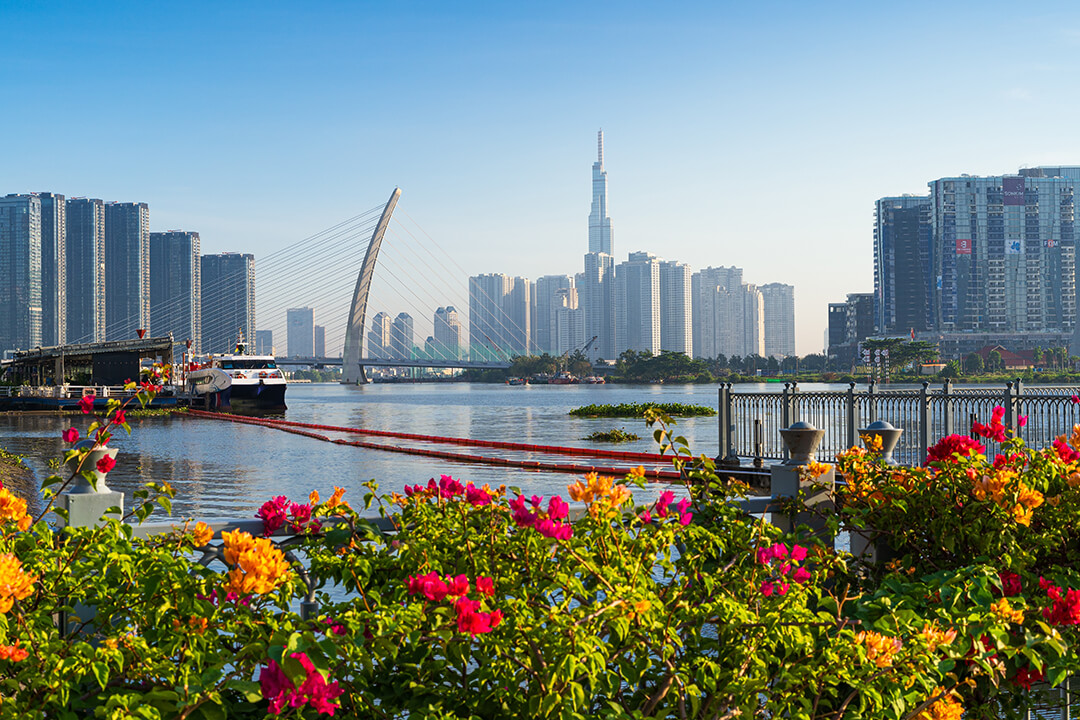
During the rainy season, from May to November, the city experiences frequent but short-lived downpours. While the rain can be refreshing, it might hinder some outdoor plans. However, this is also the time when the city’s parks and gardens are lush and green, offering a different kind of beauty. If you don’t mind a bit of rain, visiting during the off-peak season can also mean fewer tourists and lower accommodation prices.
The best places in Ho Chi Minh City
Ben Thanh Market
Ben Thanh Market is a bustling marketplace in the heart of Ho Chi Minh City. It’s a great place to experience local culture, shop for souvenirs, and taste authentic Vietnamese street food. The market is divided into sections, each offering a variety of goods from clothing and accessories to fresh produce and handicrafts. Be prepared to bargain with the vendors to get the best deals.
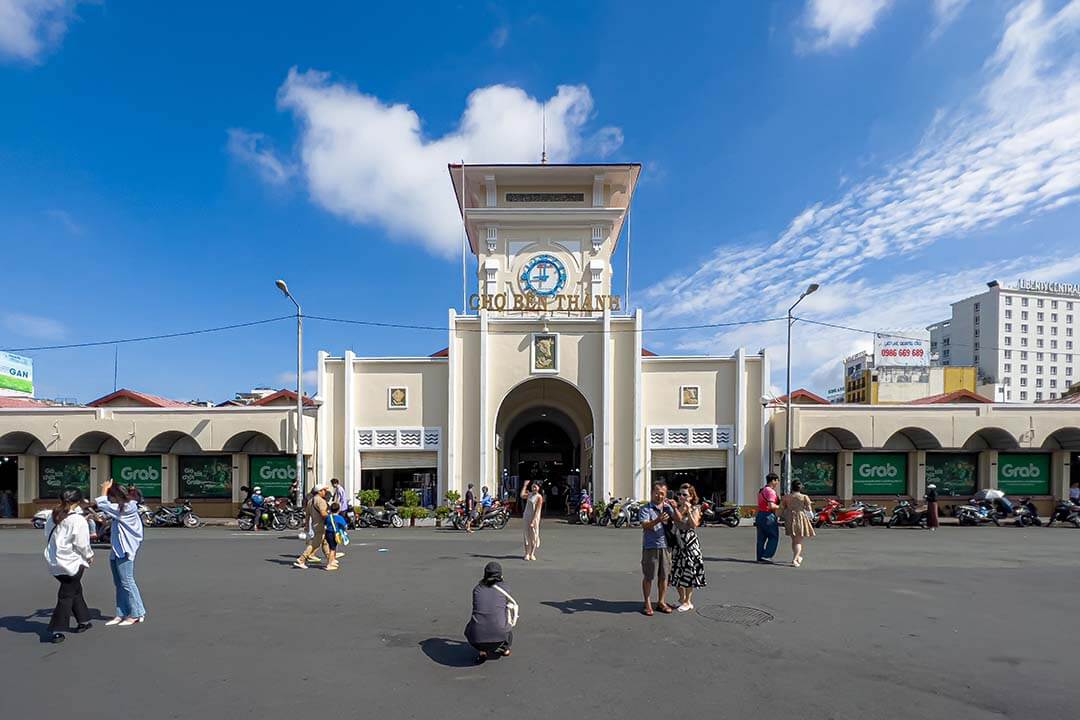
The market’s vibrant atmosphere makes it a must-visit for anyone wanting to immerse themselves in the local lifestyle. Early morning is the best time to visit if you prefer a quieter experience, while the evenings bring a lively night market vibe with food stalls and street performances.
War Remnants Museum
The War Remnants Museum provides a sobering look at the Vietnam War from the perspective of the Vietnamese people. The museum houses an extensive collection of photographs, artifacts, and military equipment. The exhibits are informative and thought-provoking, offering insight into the war’s impact on the country. It’s an essential stop for anyone interested in history.
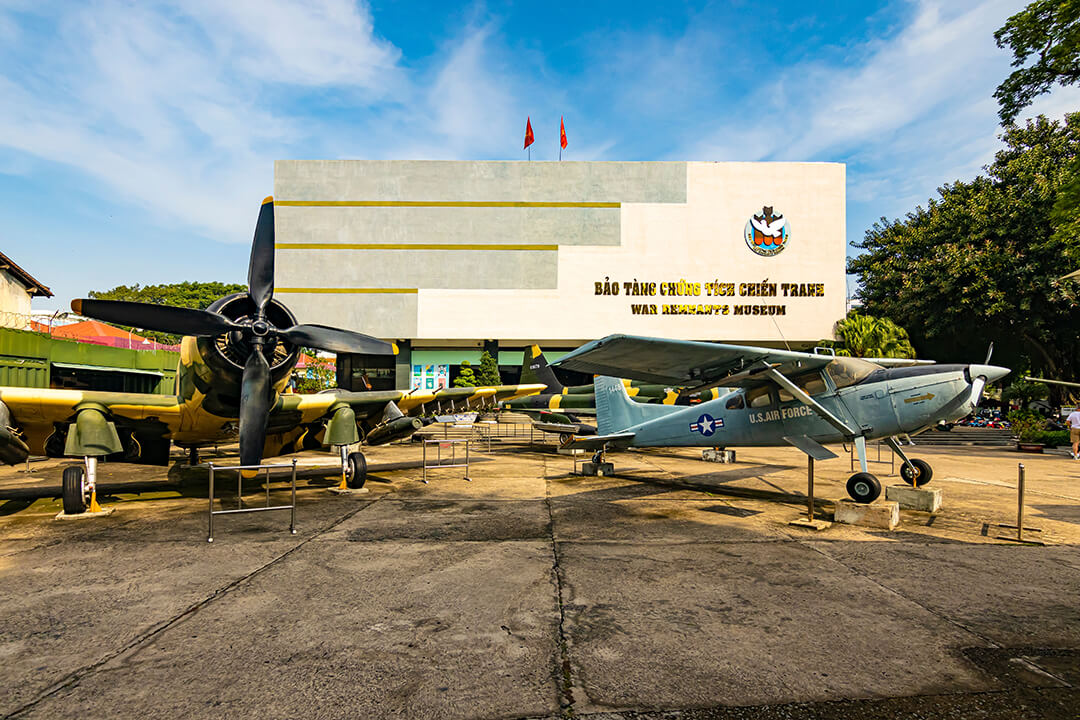
The museum is divided into several themed sections, each focusing on different aspects of the war, including the impact of Agent Orange, the My Lai Massacre, and the global anti-war movement. A visit here is a poignant reminder of the war’s lasting effects and a testament to the resilience of the Vietnamese people.
Notre-Dame Cathedral Basilica of Saigon
Notre-Dame Cathedral Basilica of Saigon is an iconic landmark in Ho Chi Minh City. Built between 1863 and 1880 by French colonists, the cathedral is known for its stunning neo-Romanesque architecture. The twin bell towers and red-brick facade make it a picturesque spot for photography. Nearby, the Saigon Central Post Office, designed by Gustave Eiffel, is another architectural gem worth visiting.
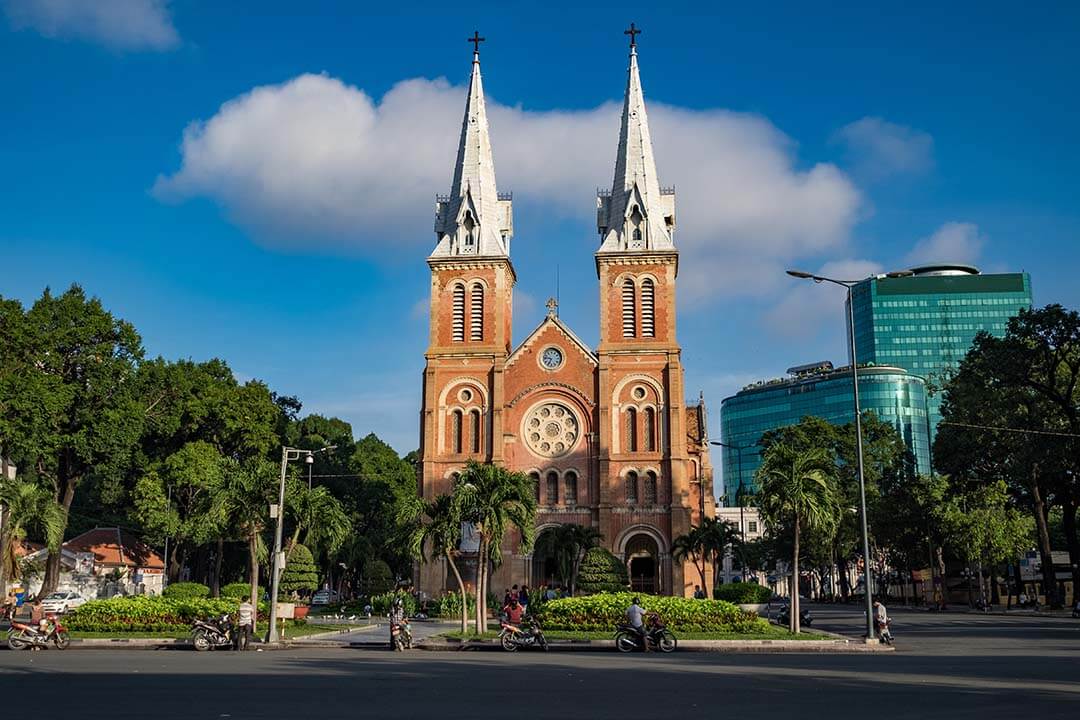
Inside the cathedral, you’ll find beautiful stained glass windows and a tranquil atmosphere perfect for reflection. The surrounding area is also home to several charming cafes and shops, making it a great spot to relax and enjoy the city’s colonial charm.
Hanoi – Thousand-year-old capital
Hanoi, the capital of Vietnam, boasts a rich history and vibrant culture and offering a perfect opportunity for a luxury stay Vietnam. Known for its centuries-old architecture and a blend of Southeast Asian, Chinese, and French influences, Hanoi offers a unique blend of the old and new. The city’s bustling streets, peaceful lakes, and historic landmarks make it a captivating destination for travelers.
The best time to travel to Hanoi
The best time to visit Hanoi is during the autumn months of September to November or the spring months of March to April. During these periods, the weather is mild and pleasant, with temperatures ranging from 15°C to 25°C (59°F to 77°F). The city’s parks and lakes are especially beautiful during the autumn when the leaves change color.
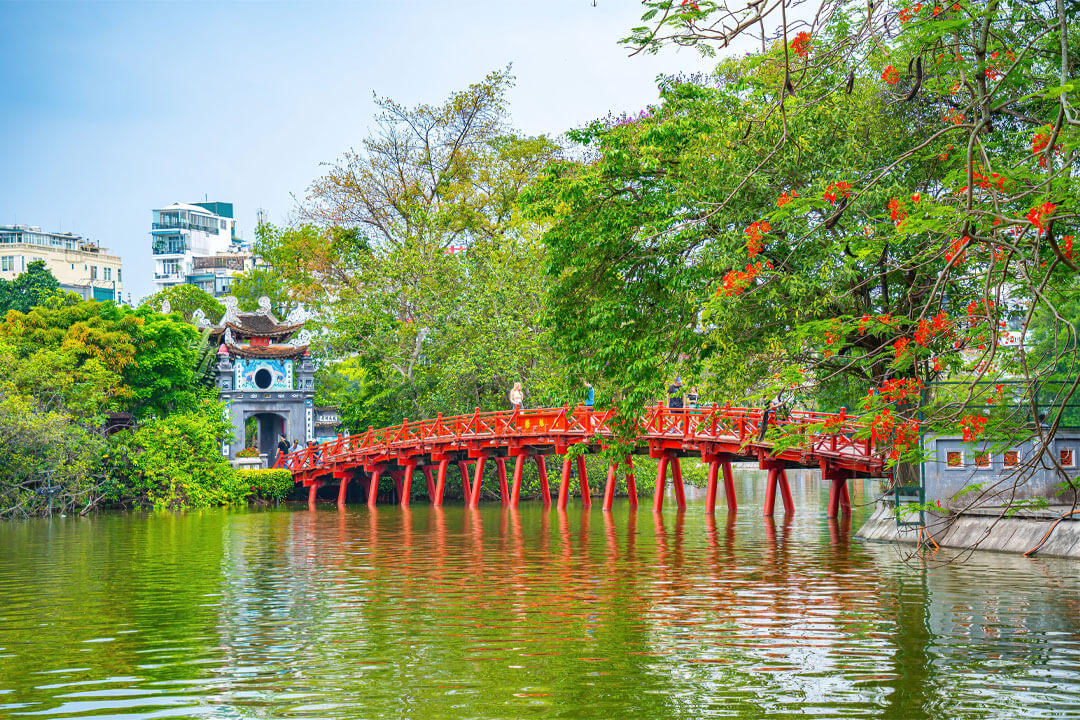
Winter in Hanoi, from December to February, can be chilly with temperatures dropping to around 10°C (50°F), but it rarely gets colder than that. Summer, from May to August, is hot and humid with frequent rains. While summer might not be the most comfortable time to visit, it does offer lush landscapes and fewer crowds at major tourist sites.
The best places in Hanoi
Hoan Kiem Lake
Hoan Kiem Lake is a tranquil oasis in the center of Hanoi. The lake is steeped in legend, with a story about a magical sword returned to a golden turtle. The scenic beauty of the lake is enhanced by the Ngoc Son Temple, located on a small island accessible by a charming red bridge. Early mornings are a great time to visit, as locals practice Tai Chi around the lake.
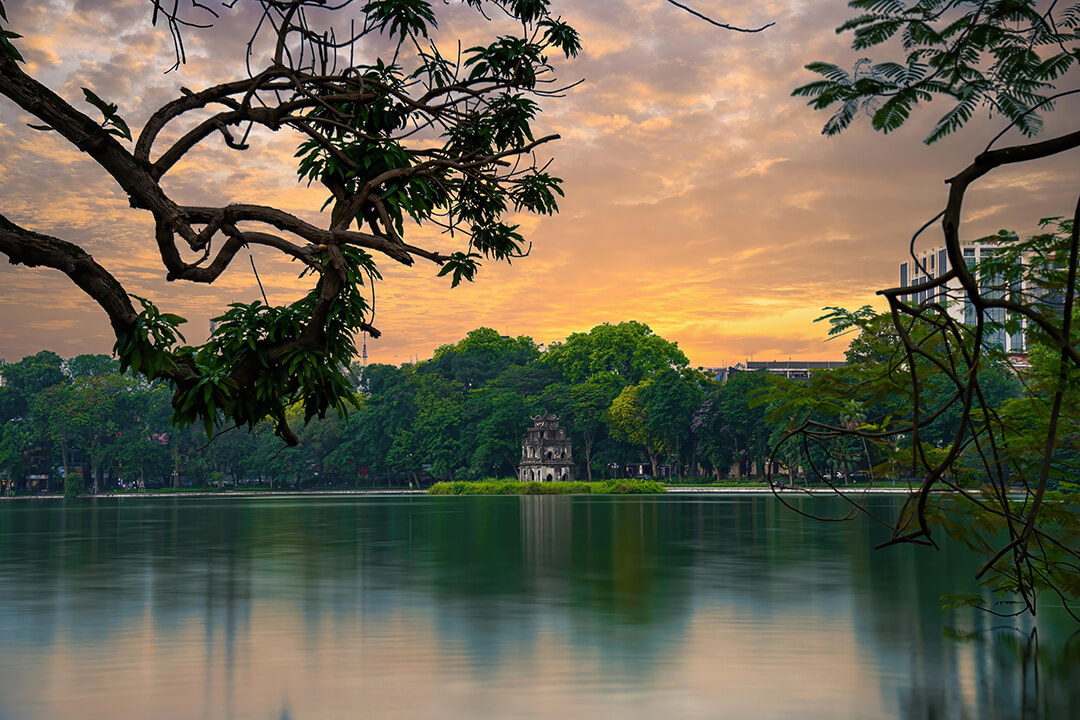
The lake area is also a hub of activity, with locals and tourists alike enjoying leisurely walks, jogging, or simply relaxing on the benches. The weekends see the streets around the lake closed to traffic, turning it into a lively pedestrian zone with street performances, games, and cultural activities.
Old Quarter
The Old Quarter of Hanoi is a maze of narrow streets filled with shops, restaurants, and street vendors. Each street in the Old Quarter traditionally sold a specific type of product, from silk and jewelry to herbs and spices. Today, it’s a bustling area where you can explore traditional crafts, sample delicious street food, and experience the vibrant energy of the city. Don’t miss the chance to try Hanoi’s famous egg coffee in one of the local cafes.
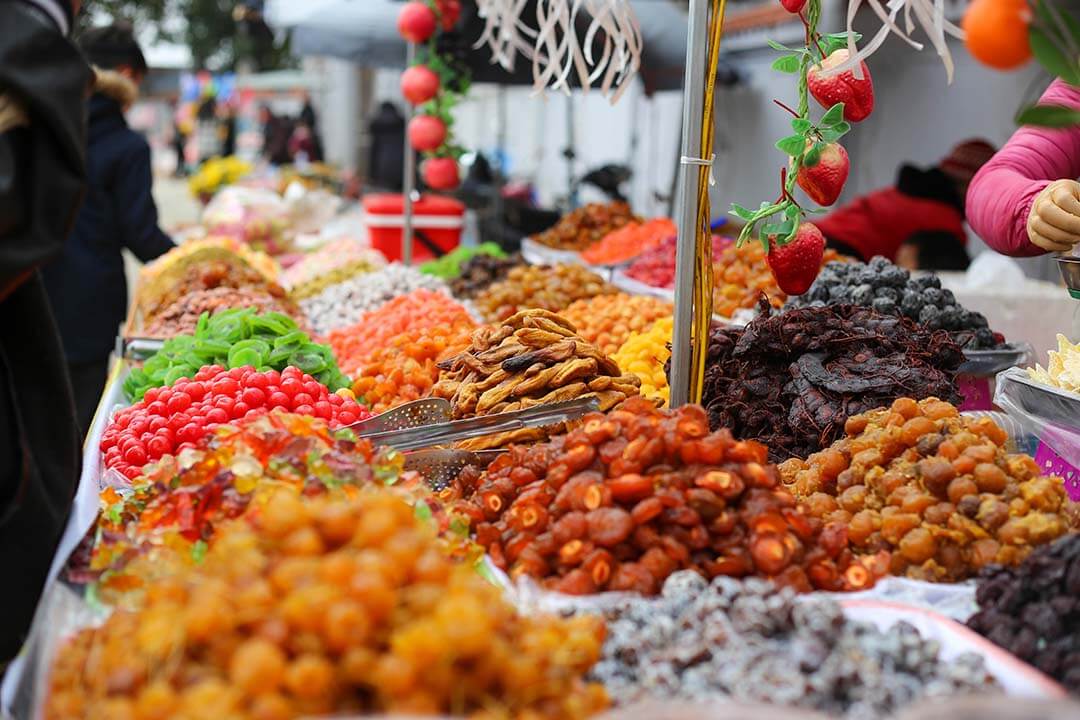
Walking through the Old Quarter feels like stepping back in time, with its well-preserved architecture and lively atmosphere. The area is also home to many historical sites, including the Bach Ma Temple and the Hanoi Ancient House, providing a glimpse into the city’s past.
Temple Of Literature
The Temple of Literature, Vietnam’s first university, is a beautiful and historic site dedicated to Confucius. Founded in 1070, it served as a center for higher learning for nearly a thousand years. The complex includes five courtyards, each with its own unique features, such as ancient stone tablets, beautiful gardens, and traditional architecture. It’s a peaceful place to learn about Vietnam’s educational heritage and admire the serene surroundings.
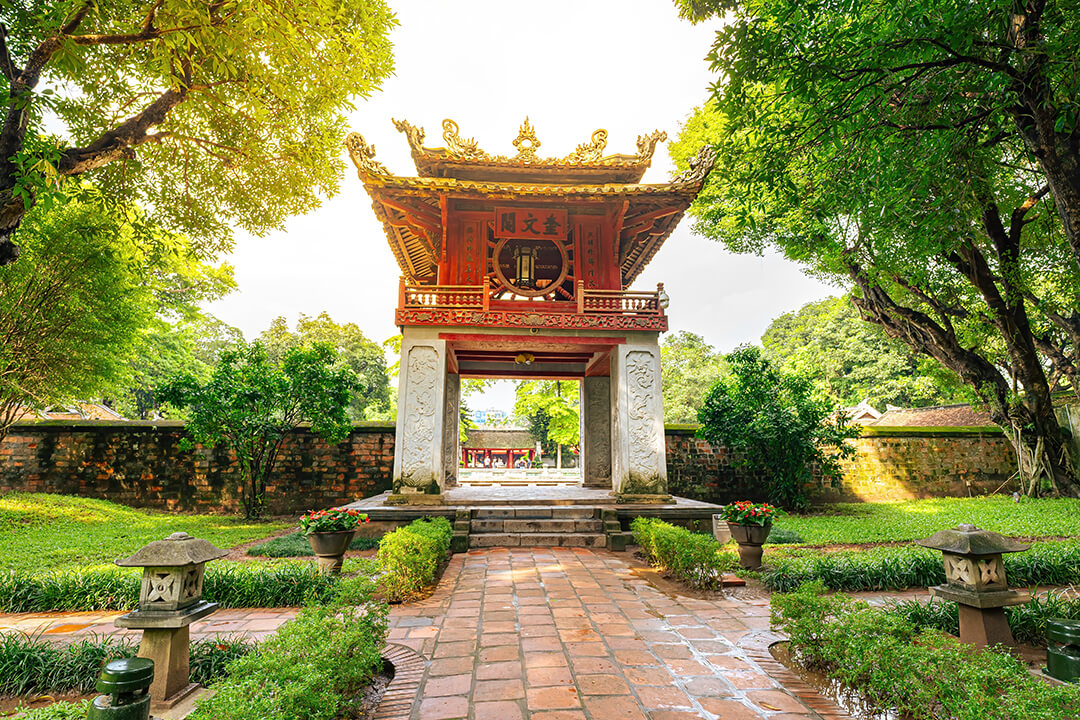
The temple’s serene ambiance makes it a perfect escape from the city’s hustle and bustle. During Tet (Vietnamese Lunar New Year), the temple is particularly vibrant with calligraphy markets and various cultural activities, providing a rich cultural experience for visitors.
Da Nang – The most livable city in Vietnam
Da Nang, located on the central coast of Vietnam, is known for its beautiful beaches and modern infrastructure. Often referred to as the most livable city in Vietnam, Da Nang offers a perfect blend of urban convenience and natural beauty. The city’s clean streets, friendly locals, and relaxed atmosphere make it an ideal destination for travelers looking for a mix of relaxation and adventure.
The best time to travel to Da Nang
The best time to visit Da Nang – a prime destination for a luxury stay Vietnam is from February to May, when the weather is warm and dry, with temperatures ranging from 20°C to 30°C (68°F to 86°F). This period is perfect for beach activities, sightseeing, and outdoor adventures .
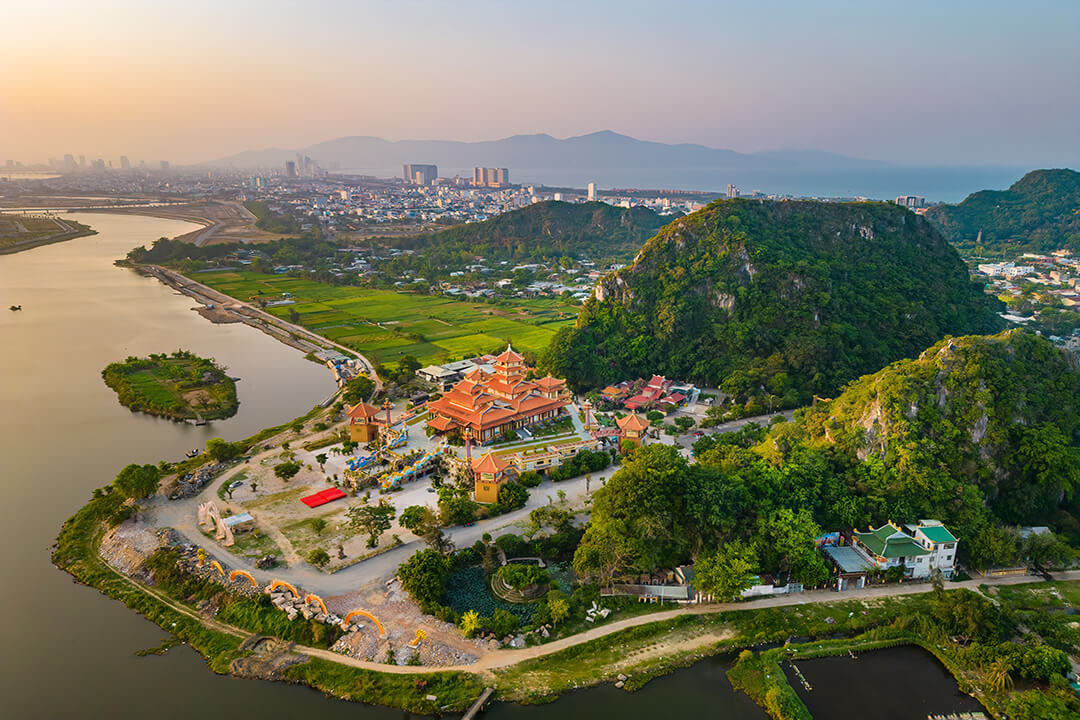
The summer months, from June to August, are hot and humid, but they are also the peak season for beachgoers. If you don’t mind the heat, you can enjoy the lively atmosphere and various water sports. The rainy season, from September to January, brings occasional typhoons and heavy rains, so it’s less ideal for a visit.
The best places in Da Nang
My Khe Beach
My Khe Beach is one of the most famous beaches in Vietnam, known for its white sandy shores and clear blue waters. It’s a great place for swimming, sunbathing, and water sports like surfing and jet skiing. The beach is well-maintained and has a range of facilities, including beachfront restaurants and bars. It’s also a fantastic spot to watch the sunrise or sunset.
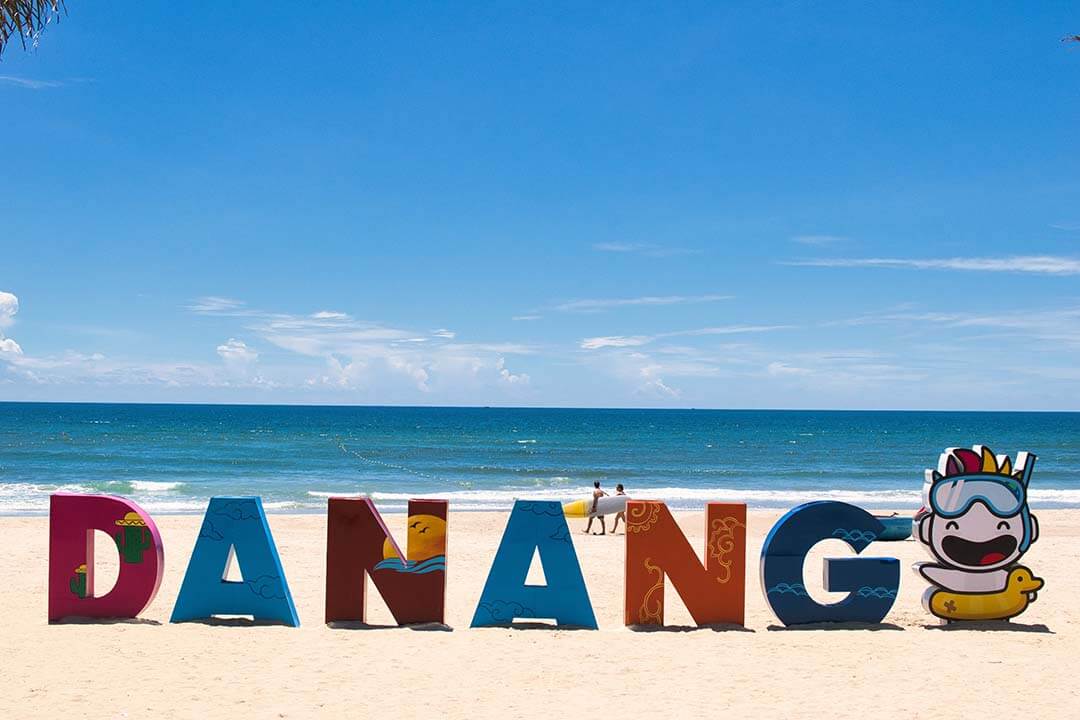
The beach’s proximity to the city center makes it easily accessible, and its gentle waves are perfect for both beginners and experienced surfers. During the early mornings and late afternoons, you’ll find locals practicing Tai Chi or jogging along the shore, adding to the serene atmosphere.
Marble Mountains
The Marble Mountains are a cluster of five limestone and marble hills named after the five elements: metal, wood, water, fire, and earth. These mountains are rich in history and spirituality, with numerous caves, temples, and pagodas to explore. Climbing to the top of the mountains offers stunning panoramic views of the surrounding area. The Marble Mountains are a short drive from the city center and make for a great day trip.
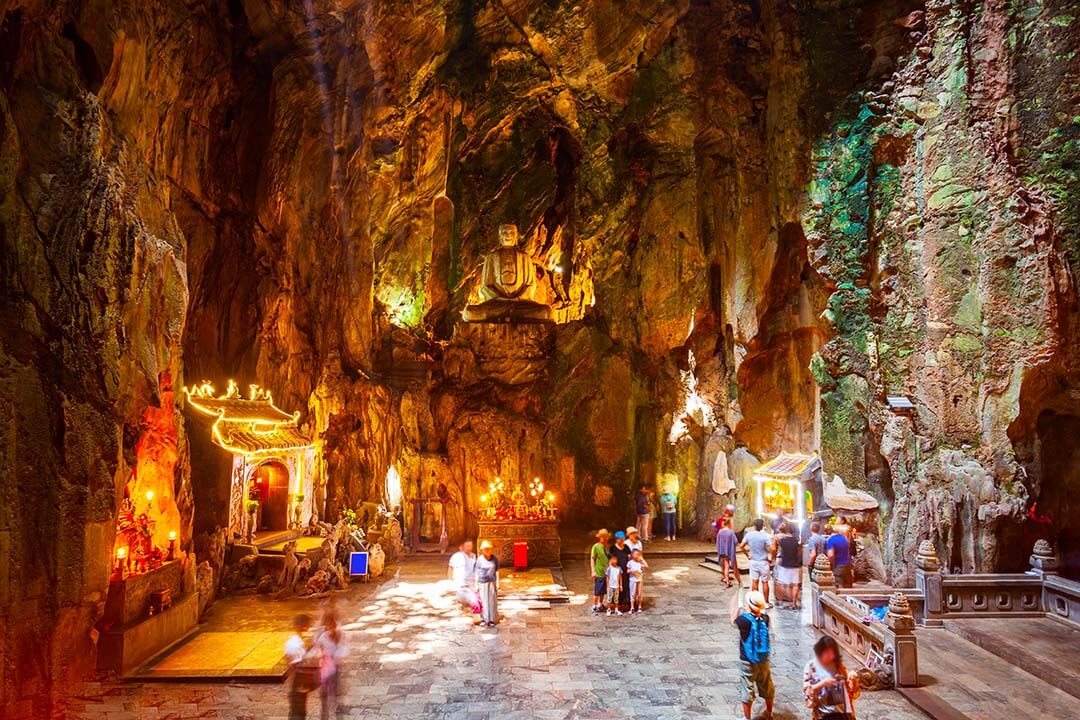
The mountains’ caves and grottoes are filled with statues and altars, creating a mystical and serene environment. Each mountain has its own unique features and attractions, such as the Huyen Khong Cave, known for its stunning natural light effects, and the Linh Ung Pagoda, offering a peaceful retreat.
Golden Bridge
The Golden Bridge is a modern architectural marvel located in the Ba Na Hills resort near Da Nang. The bridge is held up by two giant stone hands, creating a unique and picturesque sight. Walking along the Golden Bridge offers breathtaking views of the lush mountains and the sea in the distance. The Ba Na Hills resort also features a French village, amusement park, and beautiful gardens, making it a fun and diverse destination for all ages.
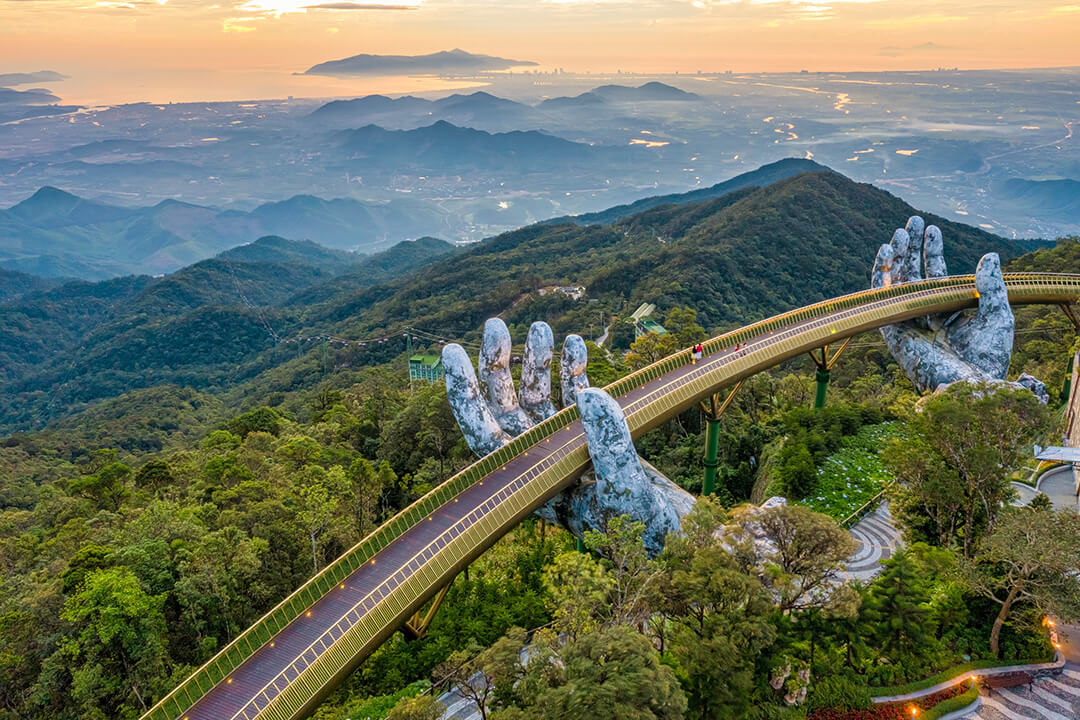
The Golden Bridge is part of a larger complex that includes cable cars offering panoramic views, a wax museum, and numerous dining options. This combination of natural beauty and modern entertainment makes the Golden Bridge and Ba Na Hills a must-visit destination in Da Nang.
Vietnam is a country that offers a wide range of experiences for travelers. From the bustling streets of Ho Chi Minh City and the historic charm of Hanoi to the scenic beauty of Da Nang, there’s something for everyone. Whether you’re interested in exploring cultural landmarks, enjoying outdoor adventures, or simply relaxing on the beach, Vietnam has it all. For more tips and recommendations, check out Vietnam Travel Tips, your ultimate guide to exploring this incredible country.


